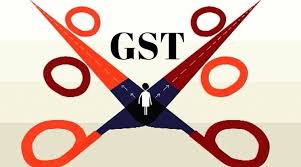 Thanks to the recent reduction in the GST rate from 28% to 18%, washing machines, refrigerators and microwave ovens among a clutch of other goods become cheaper by around 8%, effective last Friday.
Thanks to the recent reduction in the GST rate from 28% to 18%, washing machines, refrigerators and microwave ovens among a clutch of other goods become cheaper by around 8%, effective last Friday.
However, despite the exemption given to sanitary napkin (it used to attract 12% GST earlier), the item’s price reduction has not been commensurate, as the nil output tax resulted in unavailability of input tax credits (ITC) to manufacturers.
On July 21, the GST Council approved rate rationalisation for 88 items including white goods. “While there has been an overall reduction of 7.81% on MRPs of white goods across categories, the decision to provide additional discounts, if any, resides with the retailer. Prices have been reduced on the current stock at retail stores as well as on new stocks,” Kamal Nandi, business head and EVP at Godrej Appliances, said.
Nilesh Gupta, MD of Vijay Sales, cited an example saying that a microwave which retailed at `15,000 earlier is now available at `13,800. This reduction is commensurate with the 10 percentage point cut in the GST rate.
For sanitary napkins, Proctor & Gamble (P&G), one of the main sellers of the item, has reduced prices in the range of 2.8-5.9%. For instance, a pack of 7 pads is now available for `80, `5 or 6% less than earlier. Another variant of the product with 7 pads in a pack has seen only a `2 cut (3%) in prices.
Given that the GST on sanitary napkin has been reduced by 12 percentage points, prices should have been reduced by 10.7%. But in the GST, makers of exempted products can’t avail of input tax credit on taxes paid on raw material. This tax becomes cost for manufacturers instead of credit – which could have been used to offset the final GST liability.
Several inputs for sanitary napkins like super absorbent polymer, poly ethylene film, glue and LLDPE–packing cover attract 18% GST while a few other raw materials are taxed at 12%.
These input taxes are the reason manufacturers can’t cut prices by the optimum 10.7% without denting their margins.
“We updated our systems and have been passing the net benefits to the trade starting July 27, Friday. We have also expedited processes for MRP reduction on pack which will start hitting stores in a few weeks. We are communicating the price reduction to all our trade partners, modern retail partners and distributors (recipients). We are also communicating the price reduction via advertising in mass media to help increase awareness among consumers, shoppers and retailers,” a spokesperson for P&G said.
A spokesperson for Johnson & Johnson India, which makes sanitary napkin under the brand name Stayfree, said the rate cut will help increasing affordability and thereby adoption of this basic necessity that is critical to promote menstrual hygiene.
The Council’s decision is contrary to what the government had said last year: “If the GST rate on sanitary napkins were to be reduced from 12% to 5%, it will further accentuate the tax inversion and result in even higher accumulated ITC, with correspondingly higher finical costs on account of fund blockage and associated administrative cost of refunds, putting domestic manufacturers at even greater dis-advantage vis-à-vis imports.”
The government had said that reducing the GST rate on sanitary napkins to nil will result in complete denial of ITC to domestic manufacturers of sanitary napkins and zero rating imports (as nil GST on a domestically produced item would mean no countervailing tax could be levied on imports).

 Toll Free:
Toll Free:  Contact Us
Contact Us

